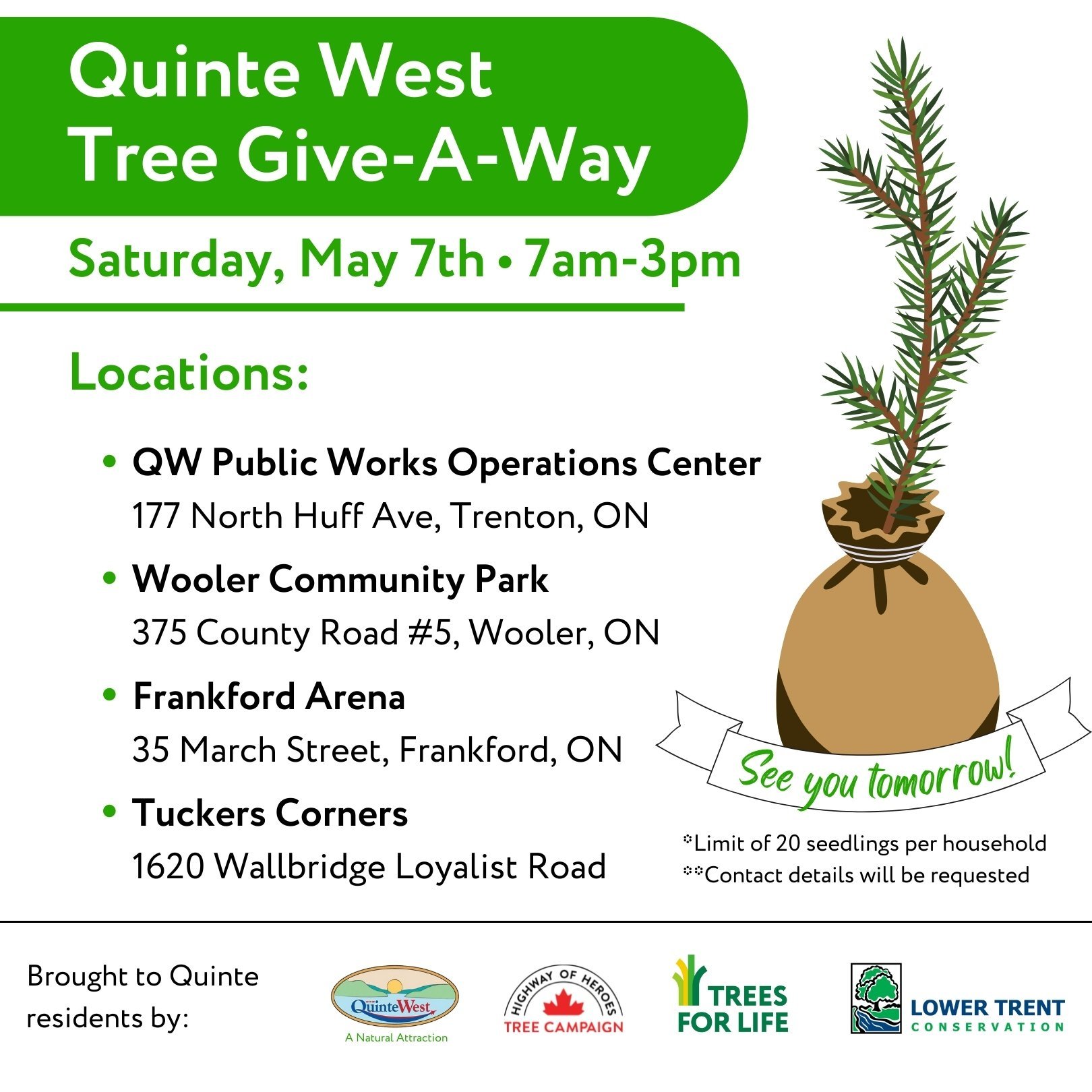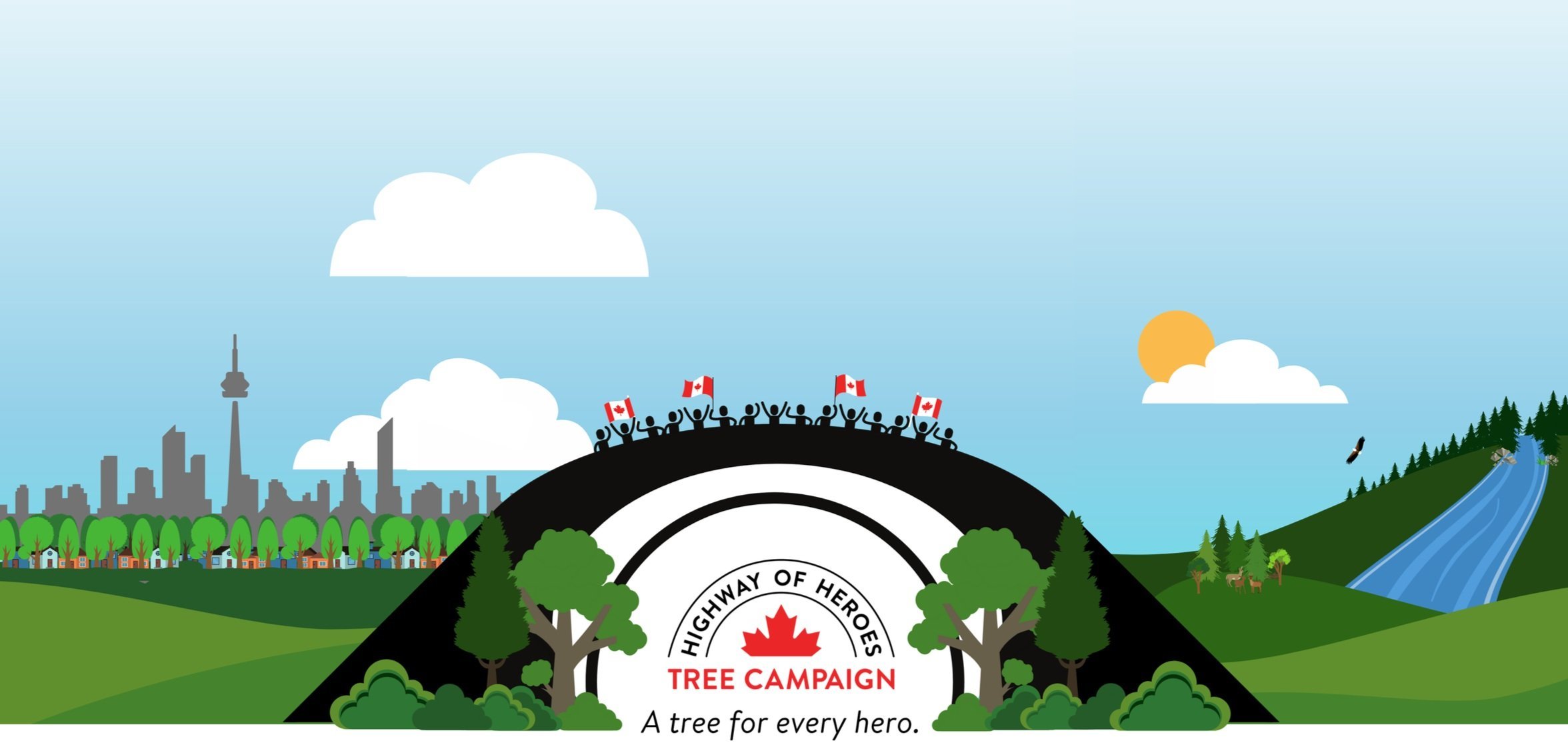
Oshawa’s Ontario Regiment Museum to unveil new 550-tree arboretum
On Friday, June 3rd, we’ll be participating in a special ceremony at Oshawa’s Ontario Regiment Museum (ORM) to officially unveil the new 750-tree arboretum.

Mother Nature Grows 100-Year-Old Seeds
There is a massive river enhancement project underway in the City of Toronto that has revealed new plants – what appear to be long lost wetland plants growing spontaneously from 100-year-old seeds. Crews noticed them because they are unlike anything else growing in the area.

Stories of Honour: Sub-Lieutenant Abbigail Cowbrough
Friday, April 29th, marked the second anniversary of the CH-148 helicopter crash that took the life of Sub-Lieutenant Abbigail Cowbrough and five of her colleagues.

Quinte West Tree Give-A-Way
Quinte West Tree Give-A-Way
TOMORROW: May 7th from 7am-3pm
Trees for Life is supporting a tree giveaway with the City of Quinte West and Lower Trent Conservation.
Join us May 7th from 7am-3pm at one of 4 locations take home up to 20 seedlings per household.

Earth Day 2022: Take Action
This Earth Day, it’s important to reflect not only on the challenges our environment faces and our role in them but on the solutions and how we can make things better.


HOHTribute Update: The World’s Largest Living Memorial Soon to Be Completed!
The Highway of Heroes Tree Campaign is expected to reach its 2 million tree goal this year.

Tips for Selecting, Planting & Caring for Your New Tree
Tips for Selecting, Planting & Caring for Your New Tree

Hero Tribute: Norman Miller
Originally Posted 12/15/2020 Stories of Honour • Highway of Heroes Tree Campaign
Born on a farm in Jacquet River, N.B. in 1924, Norm was building Spitfires, before joining the Army in 1942.

Replant.ca | Nova Scotia & New Brunswick
We are very excited about our first planting of 100,000 trees in Nova Scotia. These trees will be planted by local contractors this Fall and will be added to Nova Scotia Provincial Parks.

Balsam fir (Abies balsamea)
The Balsam Fir is a large tall narrow conifer, growing up to 30 meters in height. It is one of the more recognizable trees in Ontario. It is the only native fir to Eastern Canada and has flat, blunt needles differentiating it from Spruce.

Arbutus (Arbutus menziesii)
The Arbutus has a seasonal deciduous period form July-August, when all of the leaves from the previous year fall. The current years leaves remain on the tree during this time, making it both an evergreen and deciduous tree.

American Plum (Prunus Americana)
The American Plum is a small tree/large shrub that typically grows up to 5 meters tall. It is native to North America and is widespread throughout Canada. The American Plum is a fast-growing tree but is short lived.

What Technology Could Reduce Heat Deaths? Trees.
Trees can lower air temperature in city neighborhoods 10 lifesaving degrees, scientists have found. They also reduce electricity demand for air conditioning, not only sparing money and emissions, but helping avoid potentially catastrophic power failures during heat waves.

American Mountain-Ash (Sorbus Americana)
The American Mountain-Ash is a slow-growing, short-lived tree that can be found across Ontario, South of Hudson Bay. It grows to 10 meters tall and prefers moist ground; however, it can also grow in rocky, dry soil.

American Hazel (Corylus Americana)
The American Hazel (or Hazelnut) is a multi-stemmed shrub with a round top and wide-spread bottom. It is a larger tree so can adapt well to non-formal areas.
It will bear 2-3 years after planting, but once it starts, will be an annual, abundant crop of small, sweet tasting nuts.

Corporal James Hayward Arnal - The Christmas Card Soldier
One of James (Jim) Arnal’s favorite mottos was Carpe Diem, Latin for ‘seize the day.’ He had a natural zest for life and had done more and seen more than most people in his 25 years.

Ontario Regiment Museum Arboretum
In support of our sister organization, the Highway of Heroes Tree Campaign, 700 trees will be planted at the Ontario Regiment Museum in Oshawa. These 700 trees will be included in the 2 million trees being planted to honour our Canadian Armed Forces members through this campaign.

American Chestnut (Castanea Dentata)
The American Chestnut was a very popular tree in Southern Ontario until the blight disease. It is now considered to be a very rare tree. Prior to the disease, the tree grew up to 35 meters tall; however, most trees since have only grown to about 10 meters tall.

Improve employee attitudes and well-being with exposure to trees and nature
Employees who have a view of nature from their desk experience a myriad of benefits. They 1) find their job more challenging, 2) are less frustrated about tasks, 3) feel greater enthusiasm for the job, 4) report feelings of higher life satisfaction and 5) report better overall health than their coworkers without a view. Additionally, desk workers without a view of nature claim 23% more incidences of illness over a six-month period.

